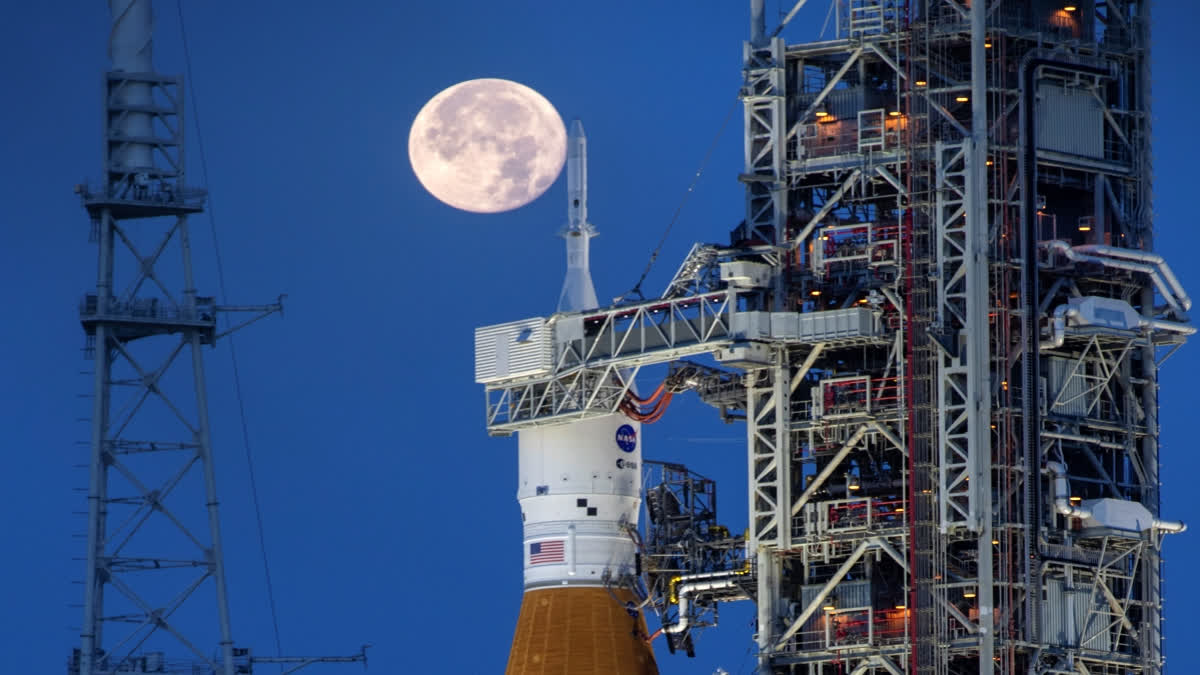Cape Canaveral: NASA Astronauts will have to wait until next year before flying to the moon and at least two years before landing on it, according to the latest round of delays announced by NASA on Tuesday.
NASA announced Tuesday updates to its Artemis campaign that will establish the foundation for long-term scientific exploration on the Moon, land the first woman and first person of color on the lunar surface, and prepare for human expeditions to Mars for the benefit of all.
To safely carry out these missions, agency leaders are adjusting the schedules for Artemis II and Artemis III to allow teams to work through challenges associated with first-time developments, operations, and integration.
NASA will now target September 2025 for Artemis II, the first crewed Artemis mission around the Moon, and September 2026 for Artemis III, which is planned to land the first astronauts near the lunar South Pole. Artemis IV, the first mission to the Gateway lunar space station, remains on track for 2028.
The space agency had planned to send four astronauts around the moon late this year but pushed the flight to September 2025. The first human moon landing in more than 50 years also got bumped, from 2025 to September 2026. NASA cited safety concerns with its spacecraft, as well as development issues with the moon suits and landers coming from private industry.
"Safety is our top priority," said NASA Administrator Bill Nelson. The delays will "give Artemis teams more time to work through the challenges." The news came barely an hour after a Pittsburgh company abandoned its attempt to land its spacecraft on the moon because of a mission-ending fuel leak.
Launched Monday as part of NASA's commercial lunar program, Astrobotic Technology's Peregrine lander was supposed to serve as a scout for the astronauts. A Houston company will give it a shot with its lander next month.
With Artemis, NASA will explore more of the Moon than ever before, learn how to live and work away from home and prepare for future human exploration of the Red Planet. NASA’s SLS (Space Launch System) rocket, exploration ground systems, and Orion spacecraft, along with the human landing system, next-generation spacesuits, Gateway lunar space station, and future rovers are NASA’s foundation for deep space exploration.
The Government Accountability Office warned in November that NASA was likely looking at 2027 for its first astronaut moon landing, citing Elon Musk's Starship as one of the many technical challenges. Another potential hurdle: is the development of moonwalking suits by Houston's Axiom Space.
"We need them all to be ready and all to be successful in order for that very complicated mission to come together," said Amit Kshatriya, NASA's deputy associate administrator. He added that even with the delay, a 2026 moon landing represents "a very aggressive schedule."
NASA has only one Artemis moonshot under its belt so far. In a test flight of its new moon rocket in 2022, the space agency sent an empty Orion capsule into lunar orbit and returned it to Earth. To the engineers' surprise, some charred material came off the capsule's heat shield during reentry. Later, testing of another capsule uncovered a design flaw in the life-support electronics, and separate battery issues popped up.
It's the same kind of capsule that will carry astronauts to and from the moon, linking up with Starship in lunar orbit for the trip down to the surface and back up.
Starship will need to fill up its fuel tank in orbit around Earth, before heading to the moon; SpaceX estimates an estimated 10 fuel transfers will be needed. The company plans an orbiting fuel depot to handle the job, another key aspect of the program yet to be demonstrated.
NASA's moon-landing effort has been delayed repeatedly over the past decade, adding to billions of dollars to the cost. Government audits project the total program costs at $93 billion through 2025. (With AP Inputs)
- " class="align-text-top noRightClick twitterSection" data="">
Read More


